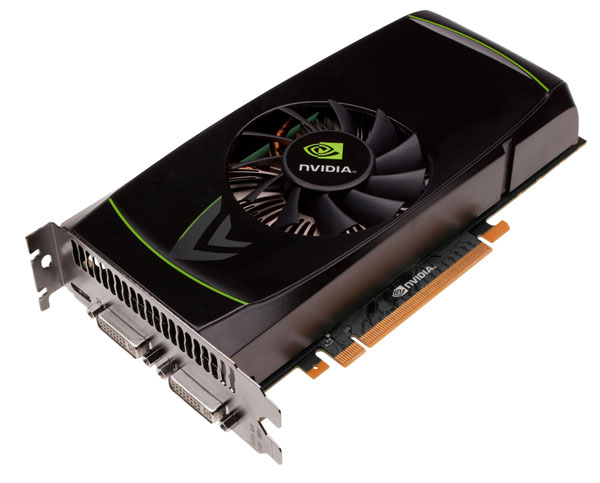ASUS, EVGA, Zotac GeForce GTX 460 Cards Overclocked and Reviewed
by Ryan Smith on July 12, 2010 8:00 AM EST- Posted in
- NVIDIA
- GeForce GTX 460
- GPUs
In 2007 we reviewed NVIDIA’s GeForce 8800 GT. At the time we didn’t know it would be the last NVIDIA GPU we would outright recommend at launch. Roughly two and a half years have elapsed since then and in that time AMD went from competitive to dominant in the marketplace. The RV670, RV770 and RV870 trilogy were all very well executed. The latter two came at a time when NVIDIA’s pricing and execution strategies took a major tumble.
Given how well AMD has executed since 2007, no one expected anything competitive from NVIDIA throughout the entire Fermi/GF100 family. Cutting down a very large, power hungry architecture wouldn’t magically produce efficient GPUs. Had NVIDIA done that, the tone of today’s GeForce GTX 460 review would’ve been very different.

Instead, NVIDIA did the unexpected. It delivered a GF100 targeted at serving the needs of the high end gamer and GPU compute user, and a reworked GF104 aimed at being a pure gaming chip for the performance mainstream segment. By pulling out ECC support entirely and significantly dropping FP64 compute power, NVIDIA freed up enough die area to add more issue and math hardware to the GF104’s SMs. The end result is a $200 - $230 part that’s better than anything else at those prices on the market today.
Yields and manufacturability, while still not great at 40nm are much better than when GF100 first launched. That combined with NVIDIA disabling some hardware on the first incarnation of the GF104 makes the GeForce GTX 460’s birth a good ol’ hard launch (at least for the 768MB version). Newegg had cards for sale several hours before the midnight NDA lift, and we had no less than 6 cards in house before our review went live.
We have two reference cards from NVIDIA (a 768MB and 1GB version), two 768MB cards from EVGA for SLI testing, a card from Zotac, and finally a card from ASUS. The EVGA GeForce GTX 460 SuperClocked is a reference design but factory overclocked. Zotac’s GeForce GTX 460 ships at stock frequencies but comes with a custom cooler. And finally ASUS’ ENGTX460 TOP 768MB is an entirely custom design running at a slight overclock with voltage controls and custom cooling.
NVIDIA is emphasizing overclocking potential of the GTX 460, which is why we see so many different versions of the card on day one of availability. The focus on factory overclocked cards, custom cooling and custom PCBs is not a coincidence. In our testing we found a least 20% headroom left on the GTX 460s we received.










31 Comments
View All Comments
ClownPuncher - Monday, July 12, 2010 - link
$460 vs $580 you mean! Though, for a 2 card setup, I would say getting a pair of gtx460 is a no brainer at this point.tviceman - Monday, July 12, 2010 - link
Both AMD and Nvidia have released several updated drivers with performance improvements since the gtx400 series came out. It would be nice if you guys could do a benchmark review of Nvidia's 400 series cards vs. AMD's 5000 series all using the latest drivers so all your readers (including me) can get a clear picture of how each card stands with the most updated drivers.tviceman - Monday, July 12, 2010 - link
It would be a great, informative article - a very informative article focusing on performance and high end parts with as updated as possible drivers and a quick overview of current prices.Etern205 - Monday, July 12, 2010 - link
One possible reason why Zotac's attempt at HD5850's cooling at failed is the HD5850 isn't reference cooling doesn't really blow hot air out of the case. If you take a look at a reference card, there will be 2 slit vents located at the top of the card, which also lets hot air out and back into the case.Here is a picture of it
http://yfrog.com/j8hd5850dj
Etern205 - Monday, July 12, 2010 - link
Sorry, link is not working...Correct link
http://img692.imageshack.us/img692/516/hd5850d.jpg
setzer - Monday, July 12, 2010 - link
One question, why still use the 10.3a drivers? Even if you say performance hasn't changed (part 1), it's only fit to compare latest drivers to latest drivers.d4a2n0k - Monday, July 12, 2010 - link
Because they just use the numbers from previous benchmarks and those were the drivers used at that time.Ryan Smith - Monday, July 12, 2010 - link
Basically this. I do spot checking on new drivers to find performance differences, but I don't run every last test on every last card on every driver (a full NV+AMD rebench is over a weeks' labor). For that reason 10.3a is listed since that's the driver version those numbers came from. Listing 10.6 would be dishonest even if the numbers are the same as we haven't tested every single configuration with 10.6.tviceman - Monday, July 12, 2010 - link
Which is why it would be great to get a re-evaluation of both AMD's 5800 series and Nvidia's 40 series all with the latest drivers. Both camps have released come out with several driver revisions stating mild to moderate performance gains in many of today's games. It would give an excellent indication as to how far both camps have come along since they released their cards, and most important it would give a more clear indication as to how performance is right now, as opposed to recycling months old benchmarks.Ryan Smith - Tuesday, July 13, 2010 - link
The numbers from the 10.3a drivers are still accurate for the 10.6 drivers. Or in other words, the performance "right now" is the same.